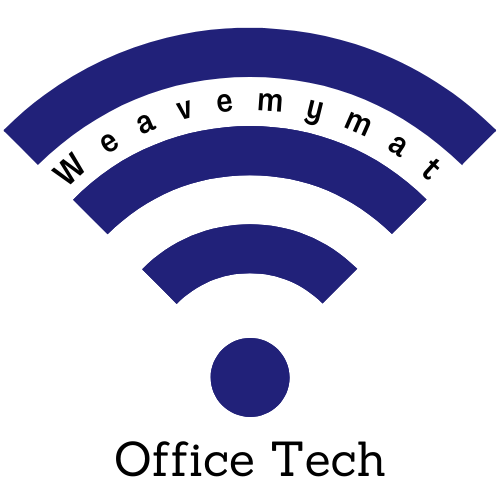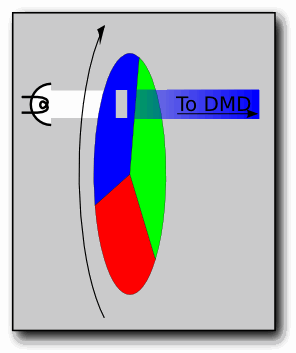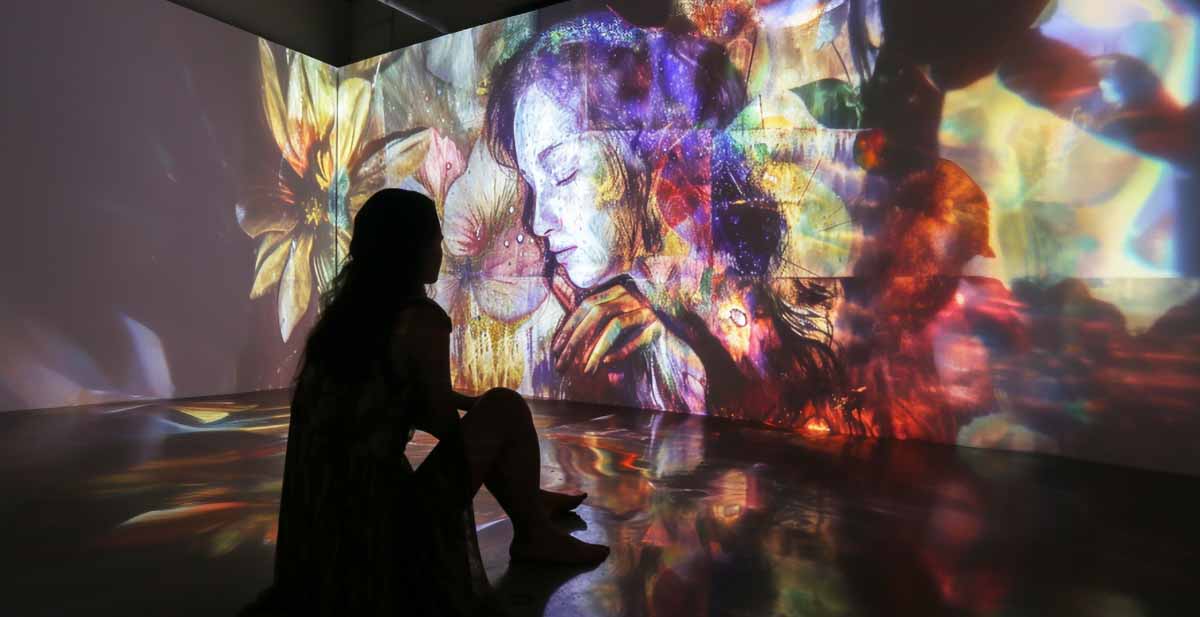Are you sick of seeing ugly rainbows at night when you are sat viewing your favourite projected media? You could be suffering from the DLP Rainbow Effect!
Below, we will provide a detailed overview of this phenomenon. We’ll explain what it is, and how it affects projectors.
We’ll also offer practical solutions to reduce the effect, and if possible, avoid it altogether!
Colin wrote this!
writer/editor at weavemymat.com

An avid technologist, having spent many years working in technical industries, and specializing in all kinds of tech stuff.
Check out more about him here!

What is the DLP Rainbow Effect?
The Digital Light Processing (DLP) Rainbow Effect is a common issue that affects projectors, particularly those that use single-chip technology.
It manifests as a rainbow-like artifact on the screen, and can usually be noticed in areas of high contrast within the projected images.
You can tell when the DLP projector rainbow effect is present, when you see the primary RGB colors (Red, Blue, Green) appearing in certain places, overlapping each other, in a rainbow-like fashion. Often this happens in very bright areas, and often adjacent to the edge of a dark area.
This can be a huge distraction to those of us who are sensitive to it, and should be among the considerations when choosing which projector technology to buy into.
After all, nobody wants to sit down to a great box-set or movie, and be subconsciously finding faults within the viewing experience, right?

The conception diagram of a color wheel used in DLP
– Source WikiMedia Author = Hachikou
What causes the Digital Light Processing Rainbow Effect?
The DLP rainbow effect happens when light passes through the segments in a rotating color wheel. When Projected onto a screen, the DLP rainbow effect can become apparent to the viewer.
Dr. Shedlo from Eye Care Center Maryland succinctly puts it like this….
In a digital light processing (DLP) projector that uses a single chip, a rotating color wheel in front of the monochromatic light source projects sequential images in different colors rapidly on the screen. The visual system of the observer combines the different colors into one image in the brain producing color motion pictures from a white light source. Unfortunately, the system is not perfect. Some individuals are not able to completely merge the different color images in their mind and individual colors are still perceived creating a “rainbow effect” around high contract images.
Citation: Eye Care Center of Maryland
Do all DLP projectors create Rainbows?
A lot of older, and cheaper projectors will suffer from this. The good news, though, is that there are other projector technologies that can reduce, and even eliminate this aberration.
Fortunately, there are several ways to overcome the rainbow effect. The most effective is to use a projector that does not rely on a single chip.
To our rescue, comes three-chip DLP technology!
With these, the requirement for a color wheel is eliminated. 3-chip DLP projectors can provide a more color-accurate image, and eliminate the rainbow effect.
However, this improvement comes at a price!
The more complex the tech, the greater the cost.
Is there a projector “Rainbow Effect” fix?
For around 40% of viewers, this rainbow artefact can be noticed.
For some of the individuals, it can be a deal-breaker, as this visual artifact is just too distracting a flaw to overlook.
Another portion of this group find it slightly annoying but, with practice, can live with it.
The secret is to try and train the mind NOT to look for this imperfection. (Easier said than done!) Also, restricting the amount of rapid eye movement can help.
Sometimes, the problem is not the technology, but a maintenance issue. If you already own a single chip DLP projector, you may have a dust build-up.
This can affect the speed rotation of the spinning color wheel, causing occasional rainbow-colored flashes.
If you are technically minded, you can possibly carefully resolve this yourself. If not, then its off to your local projector technician for a clean!
Warning Always follow the manufacturers safety instructions, though!
Other things to try to minimize the rainbow effect:
- Adjusting to optimize the contrast settings
- Tweak the brightness to minimize the condition
- If your settings allow, turn up the speed of the color wheel
- Lower the ambient light in the room
These may or may not have some impact, depending on your particular model.
Can the Rainbow Effect be Avoided in DLP Projectors?
Good news, Yes! The rainbow effect can be avoided in DLP projectors.
If it is all too much to tolerate, then the answer may lie in purchasing a different projector.
As mentioned earlier, the 3-chip DLP is your saviour here.
Best Projector Technology To Avoid Rainbow Effect
When looking to purchase a new projector, consider the following:
- RGBRGB Color wheel – This technology uses a six-segment color wheel. Red, Green, Blue segments are followed by a repeat of the same colors in the same order. This means each color is displayed twice in a row. This reduces the chance of the eye seeing colour separation.
- LED or LASER light source – unlike traditional lamp technology, these produce a single spectrum of light that eliminates the need for a color wheel altogether. This results in a smoother image without the rainbow effect.
- 3LCD projector – This technology uses 3 LCD panels instead of a spinning color wheel. This technology eliminates the conditions that create the Rainbow Effect.
Conclusion
In conclusion, the Digital Light Processing (DLP) Rainbow Effect can be a distraction for those sensitive to it. It is caused by the rotation of a color wheel in single chip DLP projectors, which can create rainbow artifacts on the screen.
However, there are ways to reduce or eliminate this effect. As we saw earlier, 3 chip DLP projector, LED or Laser light source, or 3LCD technology to avoid the rainbow effect altogether.
Ultimately, finding the right projector technology to suit your needs and preferences can greatly enhance your viewing experience.

